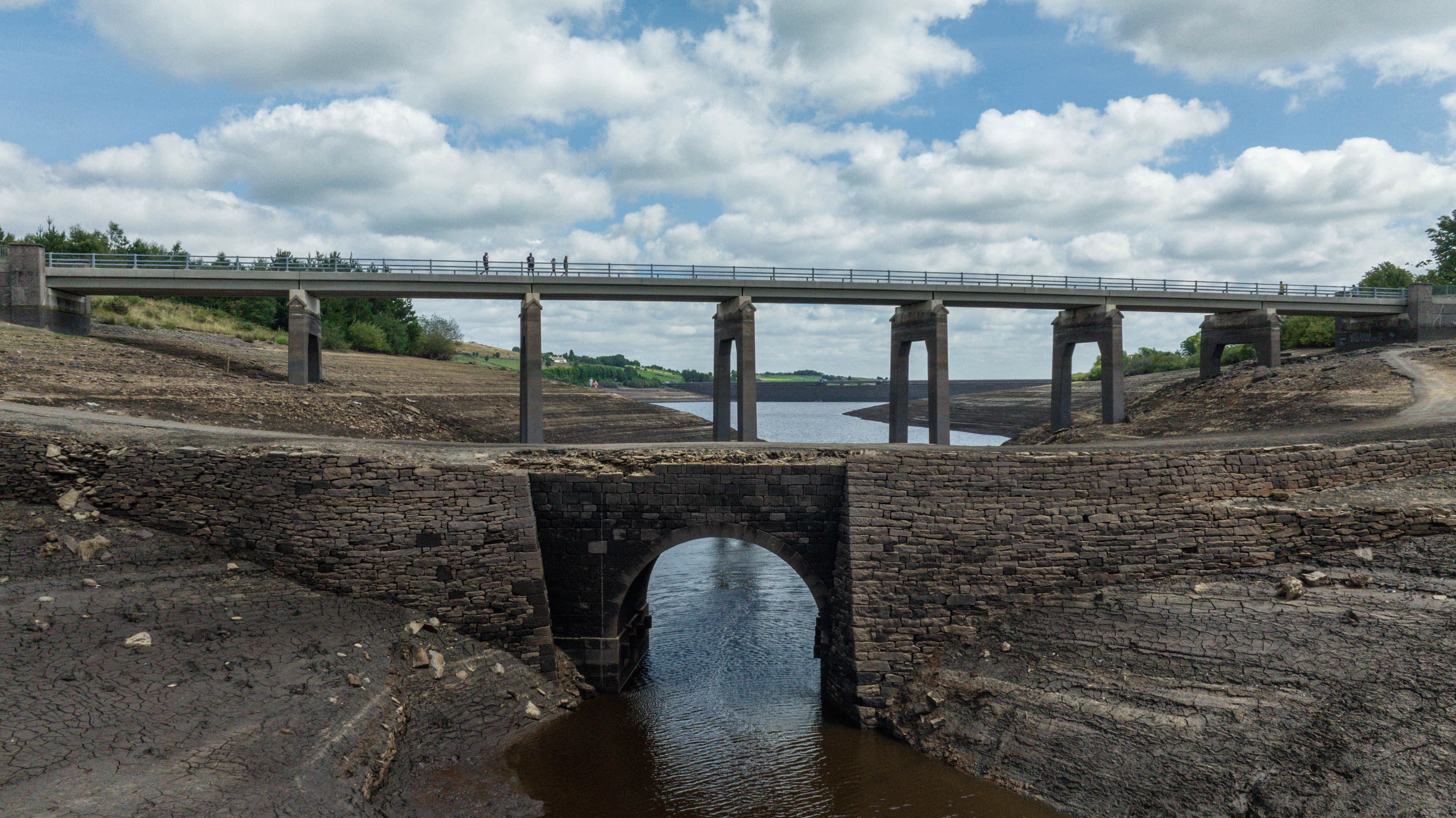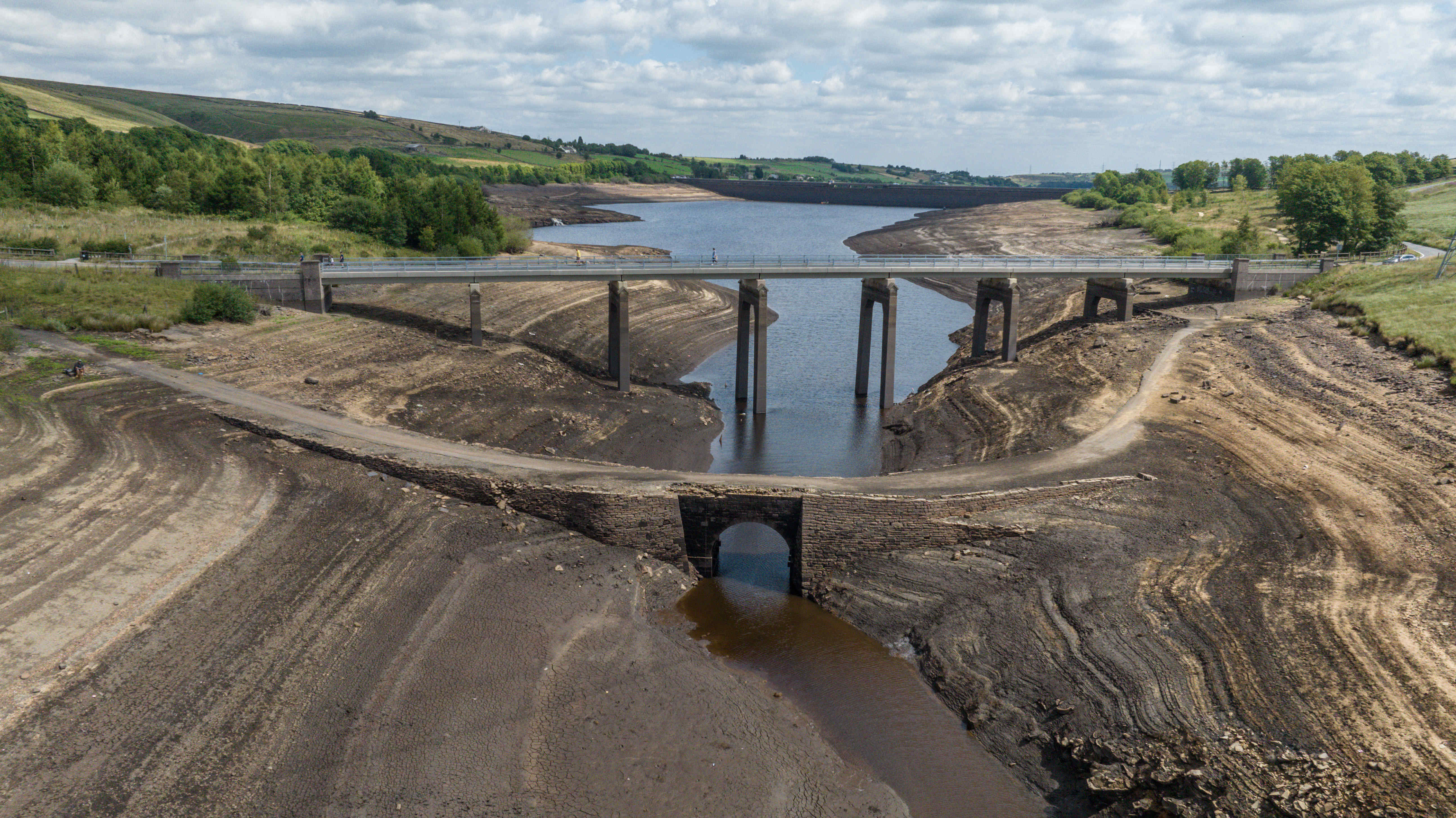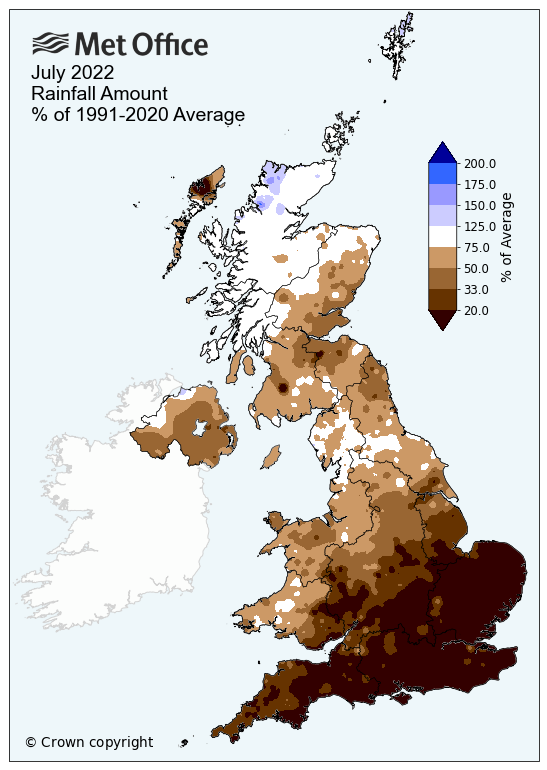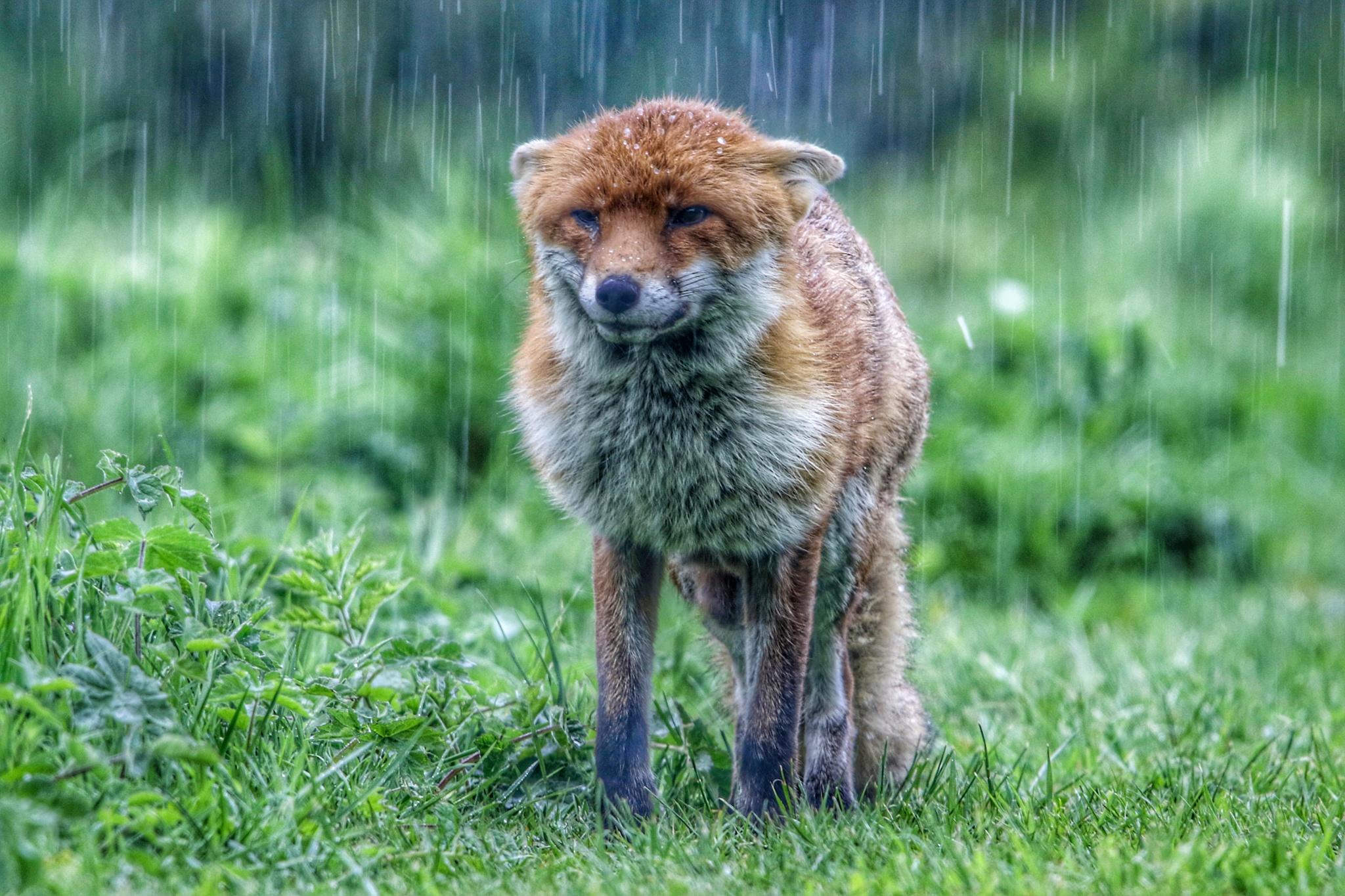

A future in droughts?
by Kirsty McCabe, FRMetS
Temperatures broke the 40 ºC barrier for the first time in July 2022. It was also an exceptionally dry month, leading to hosepipe and sprinkler bans in parts of England for the first time in a decade. In our warming world, will such droughts become the norm?

Credit: operations@newsimages.co.uk
The lack of rain was due to persistent high pressure, which dominated the UK’s weather and kept the rain-bearing Atlantic weather fronts mostly at bay. Overall, the UK received just 56 per cent (46.3 mm) of its average rainfall for July 2022, making it the driest July in over 20 years (with July 1999 recording 46.1 mm).

Of course, rainfall distribution is not equal across the British Isles, with a stark contrast between the wetter northwest and the drier southeast in 2022. Met Office statistics reveal that Scotland got 81 per cent (83.6 mm) of its average July rainfall, Wales had 53 per cent (52 mm), Northern Ireland 51 per cent (45.2 mm) and England received just 35 per cent (23.1 mm). What’s more, southern England and East Anglia reported their driest July on record.
And that follows on from a run of dry months (excluding February 2022). In other words, winter, spring and summer 2022 have all seen less than the UK average seasonal rainfall. In fact, the Met Office announced that the period between January and June 2022 has been the driest in England since 1976.
The Environment Agency convened the National Drought Group at the end of July 2022 to monitor the situation and moved England into "Prolonged Dry Weather" status - the stage before a drought.
Measures to manage drought risk
- Help those areas worst affected by operating water transfer schemes that allow rivers to be artificially maintained
- Apply for Drought Orders to protect the natural environment
- Plan with water companies to ensure they have and are implementing their drought plans
- Work with farming sector to assist farmers in prolonged dry weather areas
- Reoxygenating water and rescuing fish where river flows are especially low
- Supporting Fire and Rescue Service to tackle waste fires and wildfires
(Source: Environment Agency)
Hosepipe and sprinkler bans are due to come into force, as people are urged to use water wisely.
The 1st hosepipe bans begin tomorrow, in parts of Hampshire & the Isle of Wight
— Matt Taylor (@MetMattTaylor) August 4, 2022
👀 Watch the area go from green🟩to brown🟫 over the last few months under the dry conditions⬇️
Any rain inbound? And which areas face bans next? We’ll have the latest @BBCBreakfast from 6am pic.twitter.com/nTJyVHrkZS
Ways you can reduce your water use at home and save money too!
- Turn the tap off when brushing your teeth or washing dishes. A running tap wastes approximately 6 litres a minute
- Swap a bath for a short shower (ideally one with a low-flow shower head)
- Don’t wash your car, but if you have to use a bucket rather than a hose. This can save over 200 litres of water!
- Only run the dishwasher when full. The same applies to your washing machine and use the Eco setting if you have one
- Install a water butt in your garden and use a watering can instead of a hose
- Stop watering your lawn – grass will bounce back as soon as it rains again
- Fix dripping taps and leaky loos
(Source: Water’s Worth Saving)
'The source of the river Thames has shifted from its official start point outside Cirencester during the continuing dry weather and is now more than 5 miles (8km) downstream' ...https://t.co/1lib0mgCtB
— Marco Petagna (@Petagna) August 5, 2022
Climate projections show that by 2050, some rivers could have between 50 and 80 per cent less water during the summer months, according to the EA. A changing climate is likely to bring greater variability in rainfall and higher temperatures. July 2022’s record-breaking high temperatures and lack of rainfall may well be a “dry run” for a worrying future.




